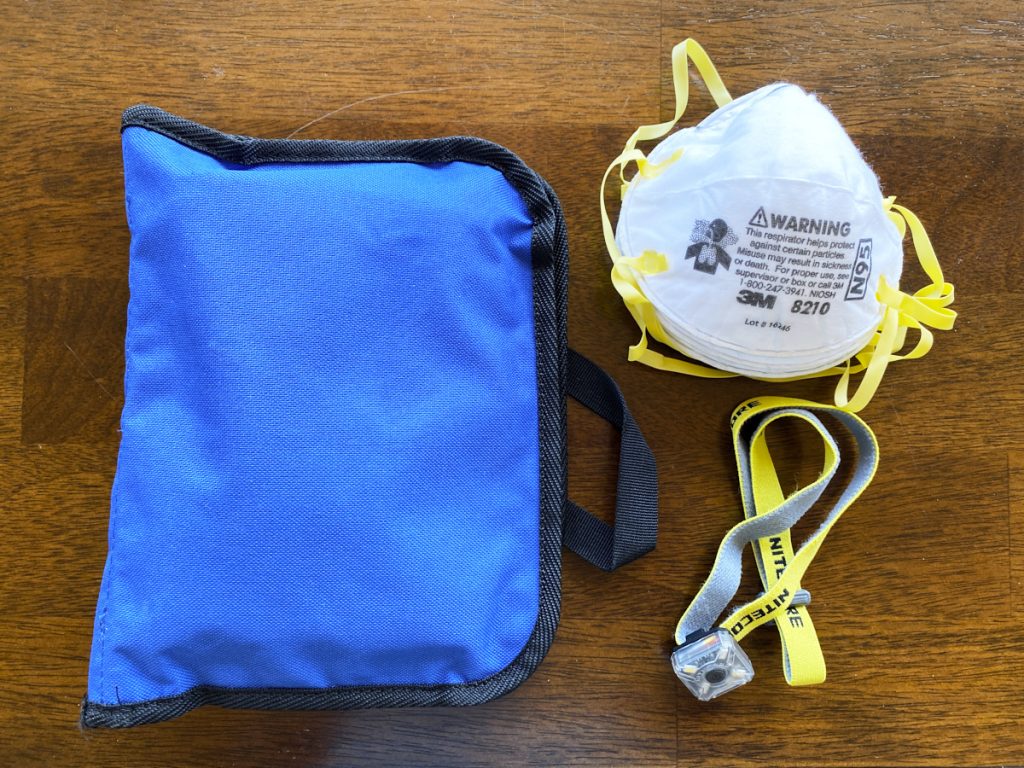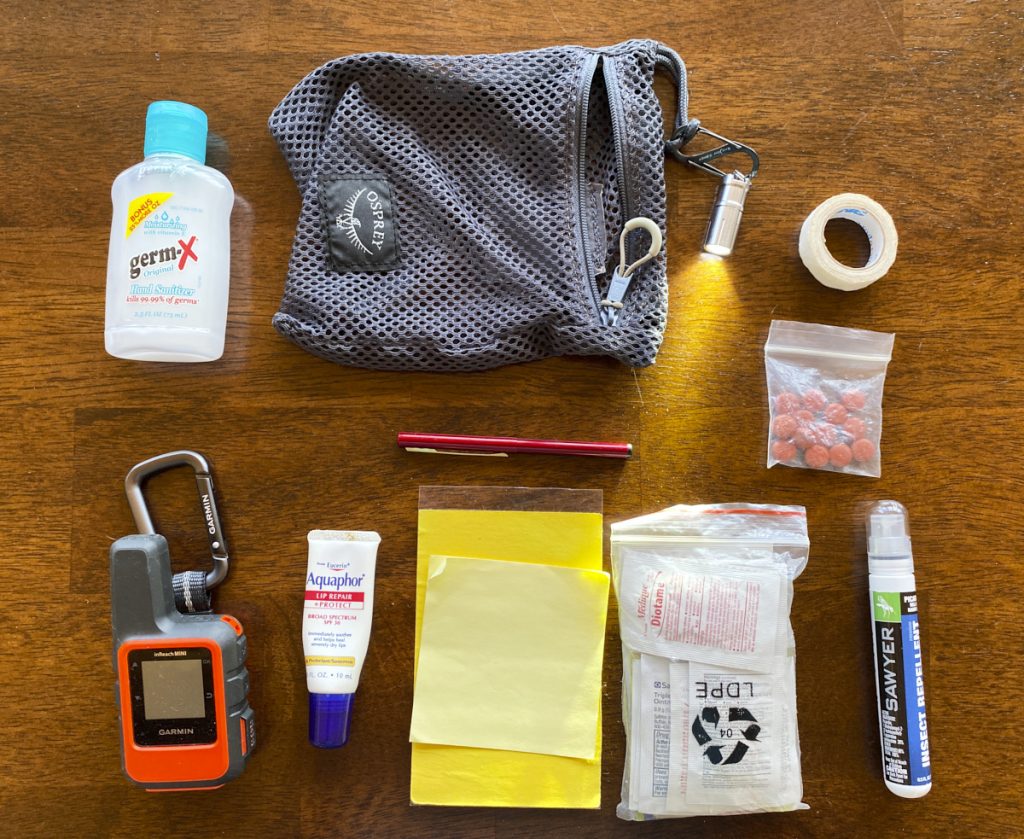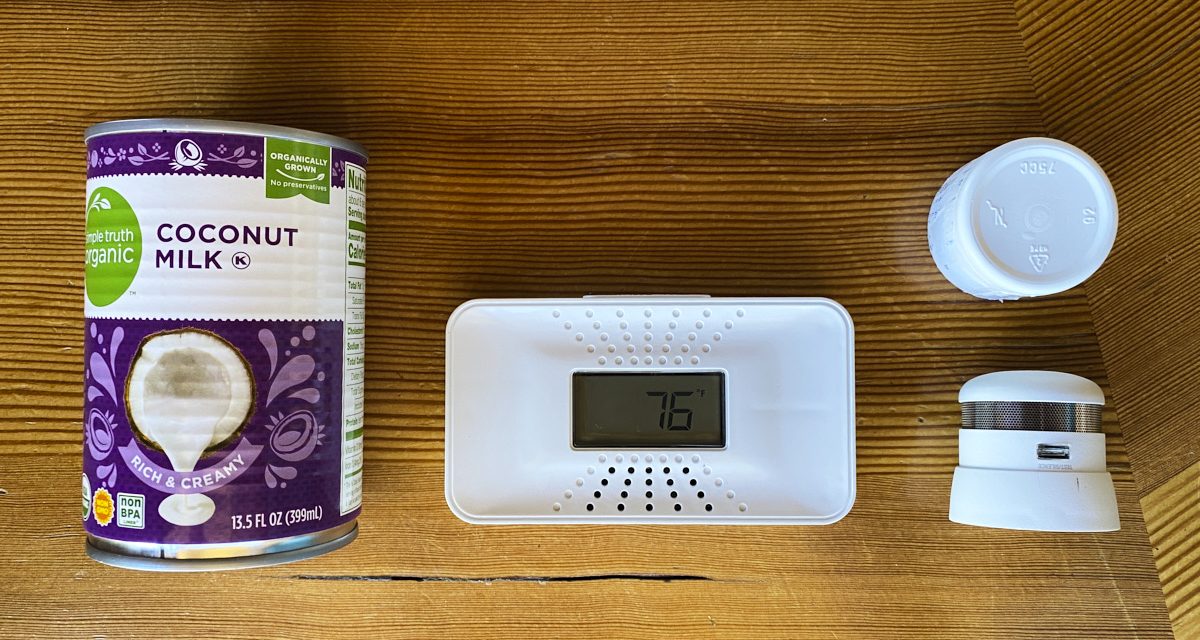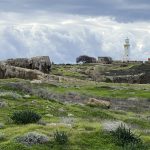In a new place, how do you know if the smoke detectors are working? In the US and Europe they usually seem ok, but in Central America or Asia I’m guessing the battery is dead (or removed) more often than not. Sometimes there aren’t smoke detectors, and CO detectors are extremely rare. So we carry our own. Turns out this isn’t difficult to do. The picture above shows the smoke alarm on the right. Its a First Alert P1010 and has a 10 year lithium battery. The only drawback is that it doesn’t have an off switch. I was worried about the test button getting pushed when it was in our luggage, but found a plastic bottle that I could cut in half, and use as a cap for the detector. A couple winds of tape secures it. So far, no accidental alarms in a year and a half! (Cap to the top right) The lithium battery is not replaceable, but experts recommend that smoke detectors be replaced every 10 years anyway, as they tend to fail over time. As a bonus- this little guy is only around 30 dollars!
The CO detector (middle) has the advantage of having a temperature readout. It has a backlight too, controlled by the top button. Handy for reminding us that our house is 52 degrees (11c) in the mornings and we need to start a fire in the woodstove! No option to switch to Celsius, unfortunately. Would have been nice, as we’re trying to stick with the units used in most of the world- helps us get used to them. Who doesn’t use the metric system? The US, Myanmar and Liberia. The CO detector also has a 10 year lithium battery, and has a power switch on the back. Cost is also about 30 dollars, First Alert CO710.

Our medical kit is on the left. Thanks to 3M for initially providing it to me for my work related international travels. It has a variety of useful medicines, including a widespread antibiotic in case we run into something serious far from a doctor. We’ve gotten rid of a few things that we never use like throat lozenges, and added more stuff that we find useful- like Diotame. (Pepto-bismol, generic name Bismuth subsalicylate, tablets, good for settling the digestive system, and even help prevent mild food illness) Total weight 1.2 pounds, or about .5kg. And face masks, which we had in storage in case we ran into heavy pollution, an erupting volcano or something else. Glad we had them for the “something else” coronavirus. And last, a little flashlight/blinking red flasher on the bottom right. Nitecore NU05. Haven’t used it much, but we figured it would be helpful if we were walking at night where lighting is poor and cars are around. It’s rechargeable, and good for about an hour on the white light, but 9 hours as a red light flasher. Weighs 10g, about 1/3 of an ounce.

Hiking safety- this is what I carry when hiking. Depending on the situation, I may carry additional sunscreen as well. Not shown- water, appropriate clothing, hiking pole.
Everything fits into the little grey bag- originally a waterproof pack cover carrying case. The satellite communicator is usually clipped to my backpack.
Clockwise from the grey bag:
- Maratec peanut flashlight
- Cloth tape
- Ibuprofen, good for reducing inflammation on long hikes
- Bug spray, found this at REI
- Various medications, bandages, antiseptics
- Post it notes
- Sunscreen lip balm
- Satellite communicator
- Hand sanitizer
- And in the middle, a Fisher space pen- writes anywhere, nice and compact. Good for filling out customs forms!
The Maratec flashlight is one I’ve used on my car keychain for years. Absurdly tiny, yet runs for 6 hours on low- enough to safely walk a path in the dark. On high, it’s only good for 30 minutes, but I tend to use high for short periods just to see something in the distance. Nice to always have a flashlight. Yes, you can use your cell phone- but if you need a light for a couple of hours, and your cell phone battery is 40%, will you make it? And will you have enough battery to call if you need to?
The satellite communicator is a Garmin Inreach Mini. An amazing little gadget, we each carry one of them. They don’t use cell phone towers, but communicate directly with Iridium satellites. Only good for texting or texting to emails, but work anywhere you have access to the sky. And Deb and I can stay in touch if we are hiking separately if we need to. Monthly plans are about 13 dollars each, with 10 free texts per month. But you can send unlimited pre-arranged messages- up to 3 different ones. So we use:
- All is good
- Delayed, but all is good
- Meet you in half an hour, or the time we set
Each of these includes current position, so the other person can keep an eye on hike progress. So if I’m out for a 9 hour hike, Deb can get updates as I go through my hike. If Deb doesn’t have cell service, then each message counts as a text- so we won’t use it as much. But still there in case of emergency. Overall, I’d say the Garmin device is amazing, but their cell phone app is mediocre. The app lets you text using the phone, and see position on a map. All texting can be done on the Garmin as well, but it takes longer. Given the peace of mind these give us, and the ability to get in touch with friends/relatives in case of a disaster that might take down the cell phone system, they are nice to have.





















